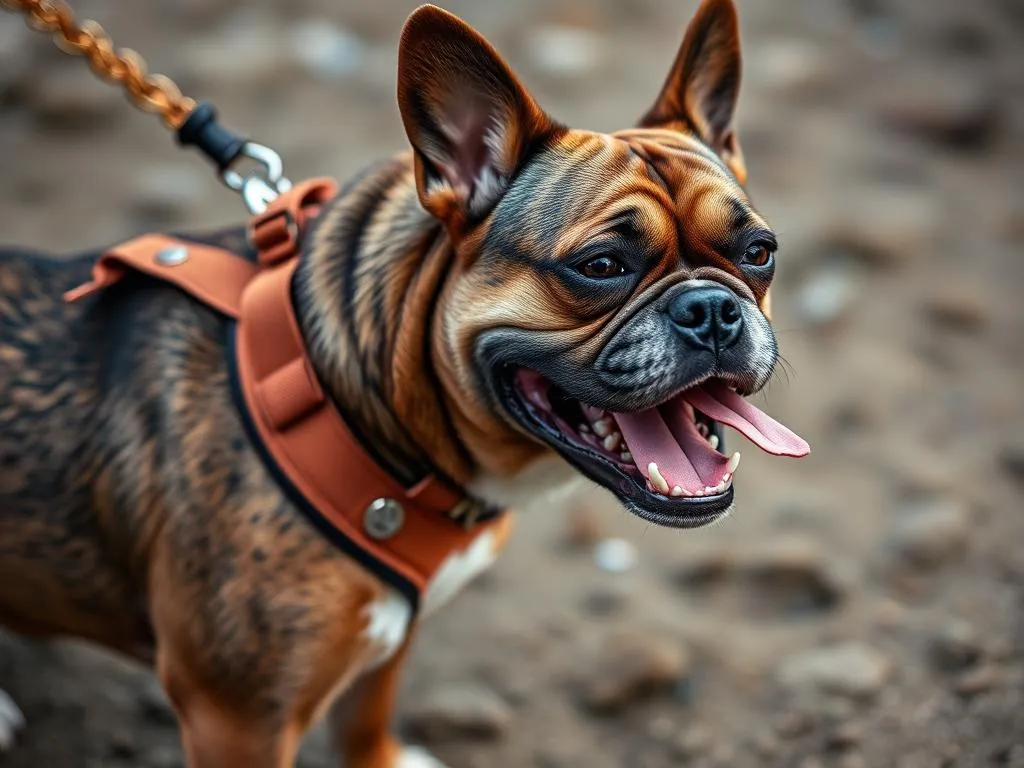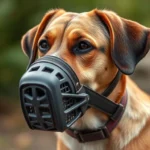
Introduction
Creating a DIY dog harness offers pet owners a unique way to ensure their furry friends are comfortable, secure, and stylish during walks. Harnesses serve an essential role in a dog’s safety and control, especially when compared to traditional collars. They provide better distribution of pressure, reducing the risk of injury to a dog’s neck, and they help prevent pulling, making walks more enjoyable for both the dog and the owner.
In this guide, you will learn about the various types of harnesses, the materials needed for crafting your own, essential measurements for the perfect fit, and step-by-step instructions to create your very own DIY dog harness. We’ll also cover tips for personalizing your harness and maintaining it over time.
Understanding Dog Harnesses
Types of Dog Harnesses
There are several types of dog harnesses, each designed for different purposes and dog behaviors. Understanding these can help you choose the right design for your DIY project.
-
Back-clip harnesses: These harnesses have a clip on the back, making them ideal for well-trained dogs who do not pull. They are easy to put on and take off, and they distribute pressure evenly across the dog’s body.
-
Front-clip harnesses: Featuring a clip on the front, these harnesses offer better control and are particularly useful for training dogs that tend to pull. The front attachment helps redirect the dog’s attention back to you, enhancing walking manners.
-
Dual-clip harnesses: Combining the features of both back and front clips, dual-clip harnesses provide versatility. They can be adjusted based on the dog’s behavior and training needs, making them a great option for various situations.
Benefits of Using a Harness
Using a harness instead of a collar has several advantages:
-
Improved control during walks: Harnesses allow for better steering and control, especially for strong or excitable dogs. This leads to more pleasant walks without the constant tugging.
-
Safety considerations: For small breeds or dogs with neck issues, harnesses provide a safer alternative by preventing strain on the neck. This is especially important for breeds prone to tracheal collapse.
-
Comfort for the dog: A well-fitted harness distributes pressure evenly across the dog’s chest and shoulders, reducing the likelihood of discomfort or injury.
Materials Needed for a DIY Dog Harness
Essential Materials
Creating a DIY dog harness requires some essential materials. Here’s a breakdown of what you’ll need:
-
Fabric options: Choose durable fabrics such as nylon or cotton. Nylon is waterproof and easy to clean, while cotton offers breathability and comfort. Consider your dog’s activity level when selecting fabric.
-
Webbing and straps: You’ll need sturdy webbing for the straps. Ensure it can withstand the pulling force of your dog. Check for a width that suits your dog’s size.
-
Fasteners: Invest in reliable buckles and clips. Plastic buckles are lightweight and easy to use, while metal options offer added strength for larger dogs.
Tools Required
To craft your DIY dog harness, you’ll need the following tools:
-
Sewing tools: A sewing machine will make the job easier, but hand sewing is possible. Don’t forget needles, thread, and scissors for cutting fabric.
-
Measuring tools: Accurate measurements are crucial for a proper fit. Use a measuring tape to ensure your harness is tailored to your dog.
Measuring Your Dog for the Harness
Key Measurements
Measuring your dog accurately is essential for creating a harness that fits well. Here are the key measurements you should take:
-
Neck circumference: Use a flexible measuring tape around the base of your dog’s neck. Ensure it’s snug but not too tight.
-
Chest circumference: Measure the widest part of your dog’s chest, usually just behind the front legs. This measurement will be crucial for the harness fit.
-
Body length and weight: While not always necessary, knowing your dog’s length from neck to tail and their weight can help in selecting the right design and sizing.
Ensuring a Comfortable Fit
When creating a DIY dog harness, comfort is paramount. Here are some guidelines:
-
Guidelines for sizing: Compare your measurements to a size chart if you’re following a specific pattern. If your dog falls between sizes, opt for the larger size for comfort.
-
Adjustments for growth: If you have a puppy or a dog still growing, consider designing your harness with adjustable straps to accommodate their growth.
Step-by-Step Instructions to Create a DIY Dog Harness
Preparation
Before you start sewing, proper preparation is key:
-
Gathering materials: Ensure you have all materials and tools ready. This should include fabric, webbing, fasteners, sewing tools, and measuring tools.
-
Setting up your workspace: Create a clean, spacious area to work on your harness. Good lighting and a flat surface will help you cut and sew accurately.
Crafting the Harness
Now that you’re prepared, let’s start crafting:
-
Cutting the fabric: Based on your measurements, cut fabric pieces according to your chosen pattern. Make sure to add extra fabric for seams.
-
Sewing the straps: Begin by sewing the straps according to the design. Use a zig-zag stitch for added strength, especially on areas that will bear the most weight.
-
Adding fasteners: Securely attach the buckles and clips. Ensure that they are positioned correctly for ease of use and safety.
Final Assembly
Once all components are ready, follow these steps:
-
Putting it all together: Join all parts of the harness, ensuring that all seams are strong and secure. Test the fit as you go along.
-
Testing the harness: Before taking your dog out, ensure the harness is comfortable and secure. Adjust as necessary to avoid chafing or discomfort.
Tips and Tricks for a Successful DIY Project
Troubleshooting Common Issues
Creating a DIY dog harness can come with challenges. Here are some common issues and solutions:
-
Adjusting fit: If the harness is too loose, consider adding additional adjustment points or shortening straps. If it’s too tight, you might need to redo some seams for a better fit.
-
Repairing damages: For wear and tear, such as frayed straps or broken buckles, make quick repairs to ensure the harness remains safe for use.
Personalizing Your Harness
Make your harness unique with these ideas:
-
Adding embellishments: Consider adding patches, embroidery, or fabric paint to customize the harness with colors and patterns that reflect your dog’s personality.
-
Personalized dog tags: Attach a personalized dog tag with your contact information. This is essential for identification and adds an extra layer of safety.
Maintaining Your DIY Dog Harness
Cleaning and Care
To ensure longevity, proper maintenance of your DIY dog harness is necessary:
-
Washing instructions: Check the fabric’s care label for washing instructions. Most fabric harnesses can be machine washed on a gentle cycle. Air dry to maintain shape.
-
Inspecting for wear: Regularly check your harness for signs of wear, including fraying straps or loosened fasteners. This can prevent accidents during walks.
When to Replace the Harness
Understanding when to replace your harness is crucial for your dog’s safety:
-
Signs of wear and tear: Look for signs such as frayed fabric, broken buckles, or weakened seams. If any part of the harness seems compromised, it’s time for a replacement.
-
Safety considerations: Always prioritize your dog’s safety. A reliable harness is crucial, so replace it if there are any doubts about its integrity.
Conclusion
Crafting a DIY dog harness not only enhances your dog’s safety during walks but also allows for personalization and creativity. By understanding various harness types and their benefits, gathering the right materials, and following a step-by-step guide, you can create a harness that suits your dog perfectly.
Engaging in this DIY project can be a rewarding experience, and it empowers you to take control of your dog’s comfort and style. Whether you’re a seasoned crafter or a beginner, making your own harness is a fantastic way to bond with your pet. So, gather your materials, measure carefully, and get started on a project that both you and your furry friend will love!









